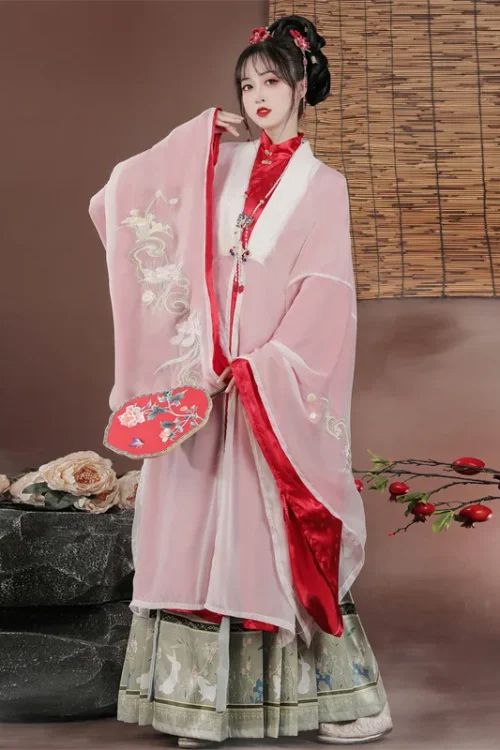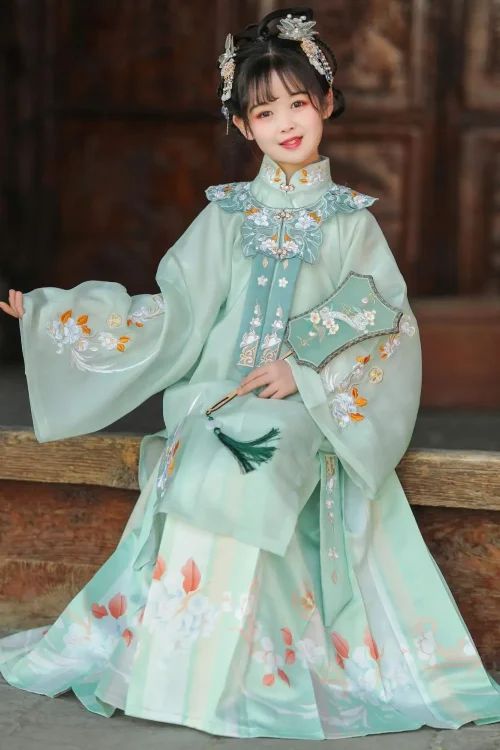The Evolution of Dinastía Ming Hanfu: A Journey Through Time
The Ming Dynasty (1368-1644) witnessed a remarkable resurgence of Hanfu, the traditional clothing of the Han Chinese. This revival was driven by a profound sense of cultural identity and national pride, as the Ming emperors sought to restore the glory of China’s past.

Characteristics of Ming Dynasty Hanfu
Ming Dynasty Hanfu was characterized by its elegant and flowing lines, vibrant colors, and intricate embroidery. It was worn by people of all social classes, from the emperor and his court to ordinary citizens. The emperor’s Hanfu was particularly elaborate, featuring intricate dragon motifs and other auspicious symbols.
Importancia cultural
The revival of Hanfu during the Ming Dynasty was not merely a fashion statement. It was a conscious effort to promote Chinese culture and values. The Ming emperors believed that by wearing Hanfu, they were connecting with their ancestors and reaffirming their identity as the rightful rulers of China.
Diplomatic Role
The Ming Dynasty Hanfu also played a significant role in diplomacy. When foreign envoys visited the Ming court, they were often impressed by the beauty and sophistication of Hanfu. This helped to enhance China’s prestige and influence abroad.
Decline After the Manchu Conquest
However, the Ming Dynasty Hanfu’s popularity waned after the Manchu conquest of China in 1644. The Manchus imposed their own clothing style on the Han Chinese, and Hanfu was gradually replaced by Manchu clothing.
Revival of Interest
In recent years, there has been a growing revival of interest in Hanfu. This revival is driven by a desire to reconnect with Chinese culture and traditions. Hanfu enthusiasts believe that wearing Hanfu is a way to express their cultural identity and national pride.
Enduring Symbol of Resilience
The revival of Hanfu is also a testament to the enduring power of Chinese culture. Despite centuries of foreign influence, Hanfu remains a symbol of Chinese identity and heritage. It is a reminder that even in the face of adversity, Chinese culture has the resilience to survive and thrive.
Hanfu in Modern China: A Revival of Cultural Heritage
The Ming Dynasty (1368-1644) witnessed a significant revival of Hanfu, the traditional clothing of the Han Chinese. This resurgence was driven by a desire to restore Chinese cultural identity after centuries of foreign rule under the Yuan Dynasty.

Characteristics of Ming Dynasty Hanfu
Ming Dynasty Hanfu was characterized by its elegant and flowing lines, vibrant colors, and intricate embroidery. The garments were typically made from silk or cotton and featured wide sleeves, long robes, and high collars. Women’s Hanfu often included skirts and jackets, while men’s Hanfu consisted of robes and trousers.
Symbol of National Pride
The revival of Hanfu during the Ming Dynasty was not merely a fashion statement but a symbol of national pride and cultural identity. The garments represented the continuity of Chinese civilization and served as a reminder of the country’s rich history and traditions.
Practical Role in Society
In addition to its cultural significance, Ming Dynasty Hanfu also played a practical role in society. The clothing was designed to be comfortable and functional, allowing for freedom of movement and protection from the elements. The elaborate embroidery and ornamentation served as a form of social status, indicating the wearer’s wealth and position.
Lasting Impact on Chinese Culture
The Ming Dynasty’s embrace of Hanfu had a lasting impact on Chinese culture. The garments became synonymous with Chinese identity and were worn by people from all walks of life. Even after the fall of the Ming Dynasty, Hanfu continued to be worn by scholars, officials, and other members of the elite.
Renewed Interest Among Youth
In recent years, there has been a renewed interest in Hanfu among young Chinese people. This revival is driven by a desire to reconnect with traditional Chinese culture and to express national pride. Hanfu enthusiasts gather at cultural events and festivals, wearing the garments and engaging in traditional activities.
Enduring Symbol of Heritage
The revival of Ming Dynasty Hanfu is a testament to the enduring power of Chinese cultural heritage. The garments serve as a symbol of national identity, cultural pride, and the continuity of Chinese civilization. As China continues to embrace its past and look towards the future, Hanfu is likely to remain an important part of the country’s cultural landscape.
The Significance of Hanfu in Chinese Identity and Diplomacy
Hanfu, the traditional clothing of the Han Chinese, has played a pivotal role in shaping Chinese cultural identity and national pride. During the Ming Dynasty (1368-1644), Hanfu reached its zenith, becoming a symbol of cultural revival and national unity.

Resurgence of Interest
The Ming Dynasty witnessed a resurgence of interest in traditional Chinese culture, including Hanfu. Emperor Hongwu, the dynasty’s founder, decreed that all officials and commoners should wear Hanfu, promoting its widespread adoption. The Ming court established strict regulations governing the design, materials, and colors of Hanfu, ensuring its uniformity and elegance.
Connection to Cultural Heritage
Hanfu’s significance extended beyond its aesthetic appeal. It represented a connection to China’s rich history and cultural heritage. The intricate embroidery and patterns on Hanfu depicted auspicious symbols, such as dragons, phoenixes, and clouds, which conveyed the wearer’s social status and aspirations.
Role in Diplomacy
Moreover, Hanfu played a crucial role in diplomacy. Ming envoys to foreign courts wore elaborate Hanfu, showcasing the dynasty’s cultural sophistication and power. Hanfu became a symbol of Chinese civilization, impressing foreign dignitaries and fostering diplomatic relations.
National Pride and Unity
The Ming Dynasty’s emphasis on Hanfu contributed to a sense of national pride among the Chinese people. It reinforced their cultural identity and distinguished them from other ethnic groups. Hanfu became a symbol of unity and belonging, fostering a sense of shared heritage and common destiny.
Decline Under the Qing Dynasty
However, the Qing Dynasty (1644-1912) imposed a ban on Hanfu, forcing the Chinese people to adopt Manchu clothing. This suppression led to a decline in the popularity of Hanfu, but its cultural significance remained.
Revival in Contemporary Society
In recent years, there has been a revival of interest in Hanfu, particularly among young Chinese people. This resurgence reflects a growing desire to reconnect with traditional Chinese culture and to express national pride. Hanfu has become a symbol of cultural identity, heritage, and a source of inspiration for contemporary fashion.
Enduring Legacy
The Ming Dynasty Hanfu stands as a testament to the enduring power of traditional Chinese clothing. It represents a connection to history, cultural identity, and national pride. As a symbol of cultural revival and diplomatic prowess, Hanfu continues to inspire and resonate with the Chinese people today.
